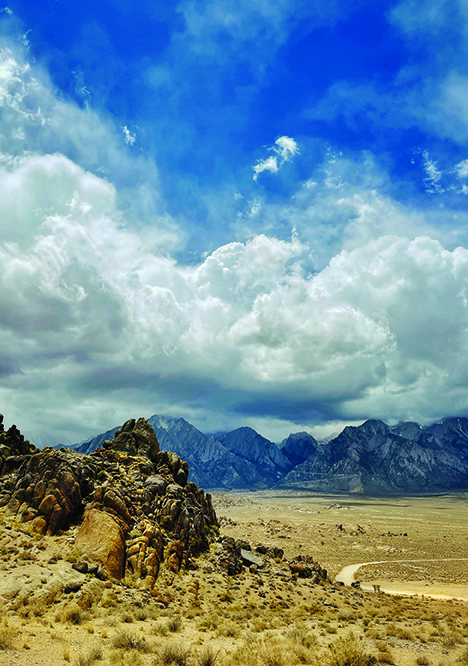
Between the tourist towns of Mammoth Lakes and June Lake lie the Headwaters of the Owens River, a basin (bottom photo) rimmed by 12,000-foot peaks that is the wellspring of a water taking a long journey to the lawns and pools of Southern California. The Owens River runs wild for its first 20 miles, until entering the infrastructure of Los Angeles Water and Power—dams, reservoirs, pump stations, hydroelectric plants, and the Los Angeles Aqueduct, which was initially completed in 1924.
On its way south, some of the Owens’ water does see the surface, notably through the Owens Gorge (above) and along a 70-section of the Owens Valley, which is being “re-watered” to create riparian habitat. Even the long-since-dry Owens Lakebed, south of Lone Pine, is seeing new life and water, thanks to a multi-million dollar dust mitigation project. (Range of Light Trailblazer details a couple dozen spots to enjoy the river along its journey.)

The Headwaters Wilderness was established in 2009, but you will normally see few hikers.
Many better-known trailheads are close by, and this one is a six-mile drive in on a dirt road. You pass Obsidian Dome, a mountain of shiny black rock, as well as the scenic mini-gorge of Deadman Creek on the way.
The 3.5-mile, round-trip trail is unimproved, but easy to follow, over crunch white pumice through a forest of huge red firs. White Wing Mountain is lofted like heaven to the north, very easy to recognize.

As you climb to enter the basin, the trail gets sketchy, joined by a network of deer trails. Normally, deer establish a sane path that is easy for homo sapiens to navigate. But not in this case. Much of the basin is carpeted with dwarf aspen, from saplings to ten-footers, creating a 50-acre giant velcro field that cannot be traversed. So, when the basin comes into view, stay high and hook right (north), looping around the lower reaches of a mixed conifer forest. Pick your own turnaround spot.
In the fall, the aspen fields create a sea of color, mostly gold, but with touches or orange and red. The trees share a common root system, so what looks like hundreds of trees is technically only one. Be Aware: Keep a weather eye peeled all year around on this hike, since fast-moving cloud fronts can bring rain, snow, and cold temps within an hour or two.



